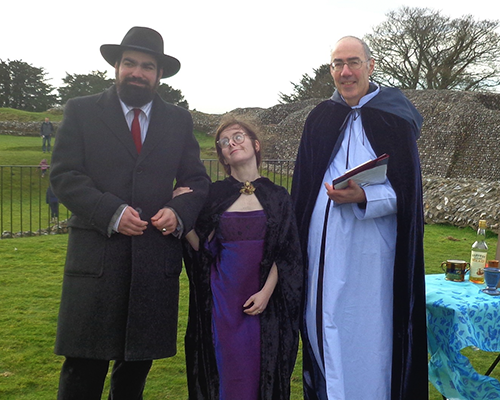
by Michael | May 26, 2015 | Blog
Judging by the questions I get asked, a lot of people really don’t know what a handfasting is. I therefore hope it will be helpful if I say a few words about it. It forms a central part in pagan ceremonies, but is often chosen as a colourful “extra” in a traditional wedding.
It may be something you would like to consider.
History
Handfastings originated in Celtic times, but began as a marriage rite in the Middle Ages. When peasants married, they might have been unable to afford a clergyman’s fee to hear their vows or a ring to signify their love. The ritual of handfasting became a popular alternative.
A cord was wrapped round the wrists of the couple and left on them until their union was consummated. It would usually be kept afterwards as a tangible reminder and proof of their commitment and love.
This ceremony has, of course, given us the expression “tying the knot”.
Present-day Ceremony
Nowadays, the cord symbolises the pair’s mutual love. The way a handfasting can be slipped in to a traditional-type wedding is as follows, although this is only a suggestion, and it will be different for a full pagan ceremony.
- Walking down the aisle to be given away by the father
- Officiant welcome
- Address about the meaning of love (possibly from a religious slant, if that’s wanted)
- Optionally, the couple’s ‘story’
- Here, or after the Handfasting, or at both times, a song or a reading/poem
- Handfasting
- Possibly, a Unity Candle, Sand Ceremony or Chalice ritual
- Exchange of Rings/Vows
- Jumping the Broom (not actually pagan, but deriving from wedding ceremonies conducted by slaves in the American South), now used to symbolise sweeping in the new as the new home is created
- Concluding words
Thoughts
As a celebrant, my favourite handfasting was part-pagan, part-Jewish containing rituals from both sides. Of course, I explained the symbolism for those unfamiliar with the other’s practices, so everyone could understand, and this worked really well to create a warm atmosphere. For example, the bride walked round the groom seven times while the groom recited his wife’s virtues (Jewish tradition), before we did the pagan handfasting.
It was a totally unique occasion – absolutely perfect for the couple and – clearly – for the guests too.
It’s something your civil celebrant will be able to advise you about.
If you want to add extra sparkle and personality to your big day, you could do a lot worse than try a handfasting.
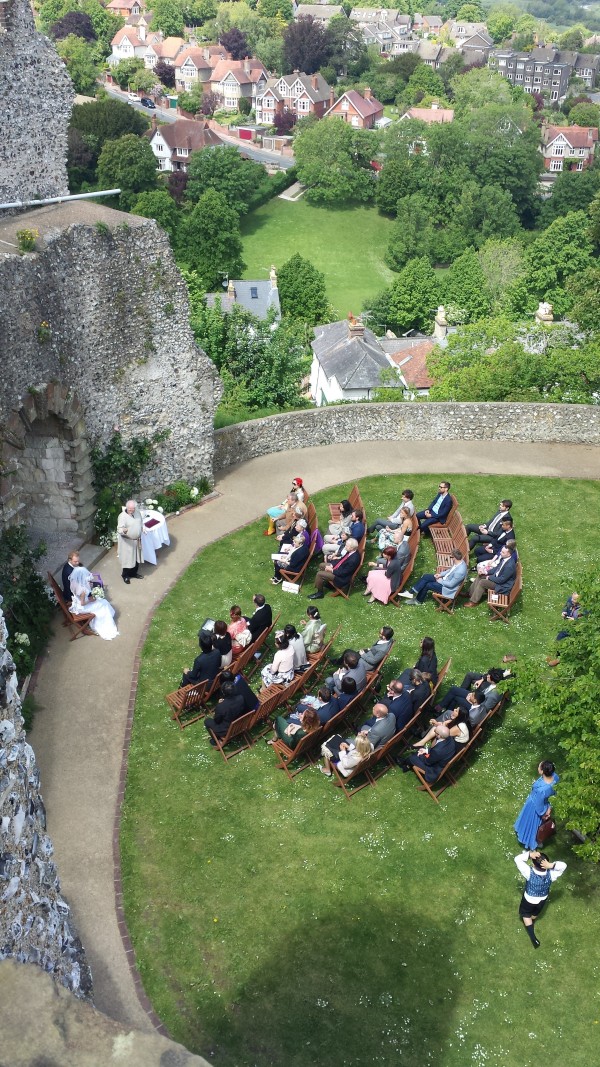
by Michael | May 5, 2015 | Blog
Just how easy is planning a wedding ceremony?
Well, OK, six steps may be over-simplifying it a bit, but the principles I’m about to suggest will be a great starting-point.
Bear in mind that not everybody will want the same thing for their wedding, so these comments may be of varying importance or relevance to people with different budgets, of different religions (or none), or with different ideas of scale, etc.
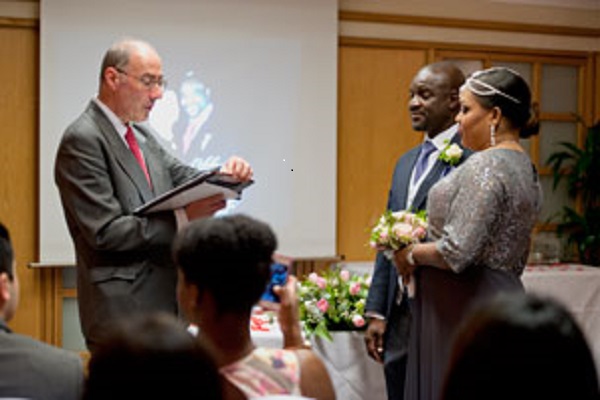
So here goes:
- Whether or not you will marry in (say) church or in a civil ceremony, you will need to give official notice of your intentions. Consult with your priest or local register office to get the legal low-down, but, as with all your preparations, allow plenty of time for this.
- You will need to book your venue well in advance. If you are choosing a civil ceremony, do go and visit the venue, so you can see if it fits in with your dreams.
- The reception may be in a different venue, but, either way, go along and book it earlier rather than later. Start thinking also about who to invite and, eventually, about seating plans, if any.
- Book your civil celebrant well in advance (they get booked up too). Meet them first (or, at least, Skype them), because you’ll want to be sure there’s going to be rapport between you. After all, you’ll have to work quite closely with them. You’ll need to decide on the type and tone of service you’ll be having. (Obviously, there’s much less freedom here if you’re having either a full religious service or else a register office ceremony.) If you’re having a civil ceremony, you’ll want to discuss the content, so that it can be personalised for you. Finally, make sure you are happy with the Ts and Cs before making your final decision (as with all your suppliers). An excellent place to start looking is at www.vowsthatwow.co.uk – well, I would say that!
- Start thinking about the music you want to include. (Again, your celebrant should be able to advise you.) Consider the sound system and also any musicians you may want to use.
- Start booking your other suppliers. These may include florists, a toastmaster, photographers/videographers, cake-makers, caterer, dress or suit supplier, post-ceremony entertainer, hair/beauty treatment, guest accommodation, etc.
If you want a concise, easy-to-follow (and modestly-priced) guide that will take you virtually every inch of the way, then have a look at my recently-published “Your Wedding Guide”.
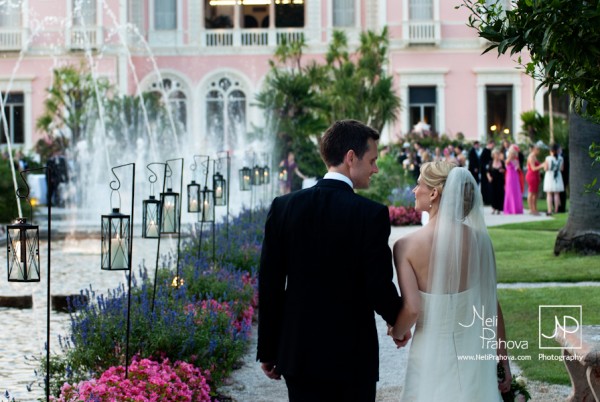
by Michael | Apr 7, 2015 | Blog
Most people think that they can only get married in a religious building like a church or at a register office. More enlightened people may know that they can choose licensed buildings (usually certain hotels or restaurants) too. However, there are other options, if you’re looking for a unique wedding venue.
The legal bit
If you are going for an unlicensed venue, you need to be aware that you still have to cover the legal part of the ceremony by marrying in a register office. You don’t need to make a big thing of this part of the ceremony. Just make an appointment and show up with two witnesses. Then you can head off to the venue of your dreams.
If you’re using a licensed building, then the registrars will come along conduct their ceremony.
Alternative venues
The world is almost literally your oyster when it comes to choosing your venue. Of course, you must expect to pay for it, so doing your homework is essential. That applies to outdoor locations too. Don’t forget that someone somewhere owns the land you will want to use, so, at the very least, ensure you ask permission first.

A few choices
A couple of places where I have officiated (and I’m not including lovely places like the Royal Box at Epsom racecourse) are Old Sarum (an Iron Age fort overlooking Salisbury) and in a secluded grove at a Canal Boat centre. They were very special. (I am also hoping for the Shard in London!)
Obviously, there’s no way I can give an exhaustive list of venues you might not have thought of (or anything approximating to one). However, I thought it might be helpful if I suggested twenty different places you could consider. Here goes!
1. An art gallery
2. An alpaca farm
3. A supermarket (really! It’s been done!)
4. A castle or stately home
5. A mountain top
6. A ferry or boat
7. A desert/forest/bridge
8. A tent/yurt/marquee
9. A lakeside
10. A hot-air balloon
11. A cliff-top (with great care!)
12. On a glacier/by a snowdrift
13. A bowling alley (yes, it’s feasible)
14. A field
15. A beach
16. A museum
17. A canal boat
18. Botanical gardens
19. A lighthouse
20. A zoo.
Hopefully, these suggestions will give you something to think about, when you look for your unique wedding venue (and wedding).
And they are all venues I’d be more than happy to attend if you invite me to conduct your bespoke ceremony!
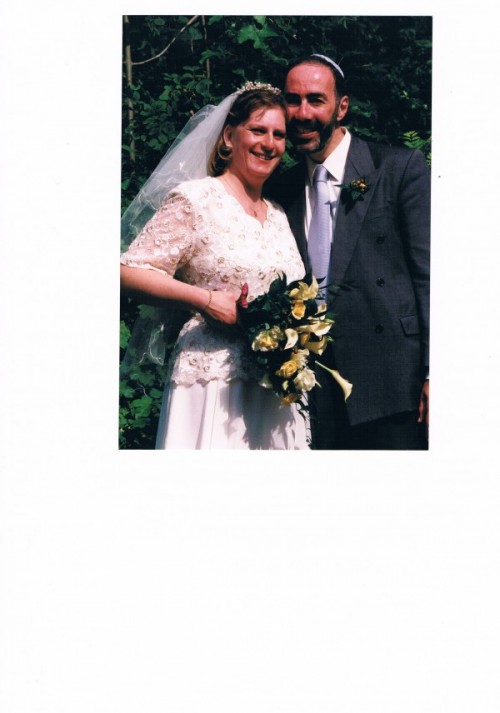
by Michael | Mar 17, 2015 | Blog
Divorce is not necessarily the only cause of a marriage break-up. One other I could name is death. But whatever the reason for the break-up, it can be difficult to gee oneself up for a second wedding.
Certainly, many people who remarry choose to go for a smaller affair than the first.
One big ‘plus’
A huge advantage about a second wedding is that it can be fun!
There is no reason now why there should be the stress of family pressure. Your second marriage is exclusively about you. You are mature, consenting adults – maybe with your own children and homes. This ceremony is all about your commitment to each other (although sharing the celebrations with others is very much a part of it too).
The good news is, then, that you don’t have to follow other people’s rules. You can do what you want.
That means that clothing, guests, venue, celebrant, reception are all up to you.
Clothing
There is no obligation to wear – or avoid – any particular clothing. If a second-time bride wants to wear white, why shouldn’t she? (Even if she wore it the first time around.) A full-length gown is lovely, but why not a shorter dress in a different colour or colours? Formal or informal? It’s down to you.
Guests
It is almost unthinkable, but you can actually invite only the people you want. You can have a huge affair or fly off somewhere with just a couple of friends. You might have a small reception for closest family and friends. There is no need to break the bank, if you do not want to.
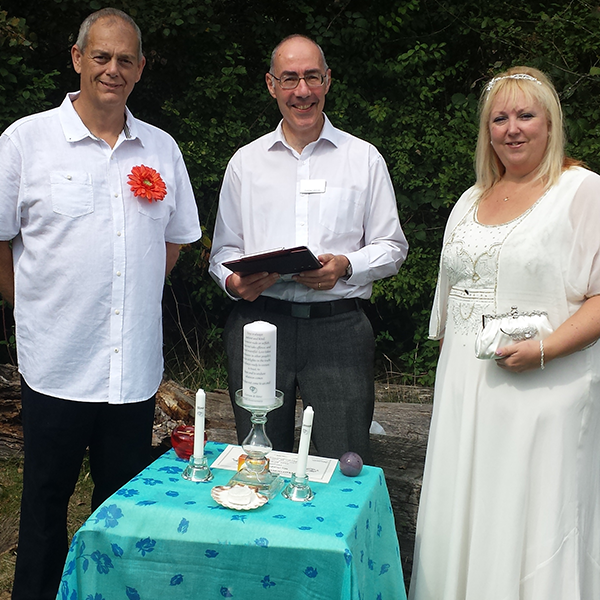
Ceremony
If you want a creative, personalised ceremony, then have a chat to a Civil Celebrant. You will get good ideas and will be able to put together a ceremony that reflects your personality and will be really special.
There’s plenty of information at https://vowsthatwow.co.uk/civil-weddings/.
Venue
Depending on your religion’s take on remarriage, the religious option may be for you; you may want only a quiet (if uninspiring) register office wedding.
Many people these days choose a hotel or restaurant, but there’s nothing to stop you using a back garden, museum, hot-air balloon or wherever your imagination takes you. (Do get permission first!)
It can be a casual affair or as formal as you choose. But remember: whatever you go for, the wedding will need to be legally recognised, of course.
Reception
Again, the scale and budget of the affair will dictate what sort of reception you will choose. You might like to read my comments on receptions in a recent blog:http://wp.me/p5qOOT-w7 .
Wedding gifts
You can come up with a wedding list, but you may – especially if you are combining two homes – already have virtually everything you need. You can, however, invite guests to contribute money to a charity of your choice.
I hope these suggestions will be useful to you – whichever number marriage you are embarking on! You will learn from any past mistakes and enjoy precisely the wedding that you want. Good luck with it!
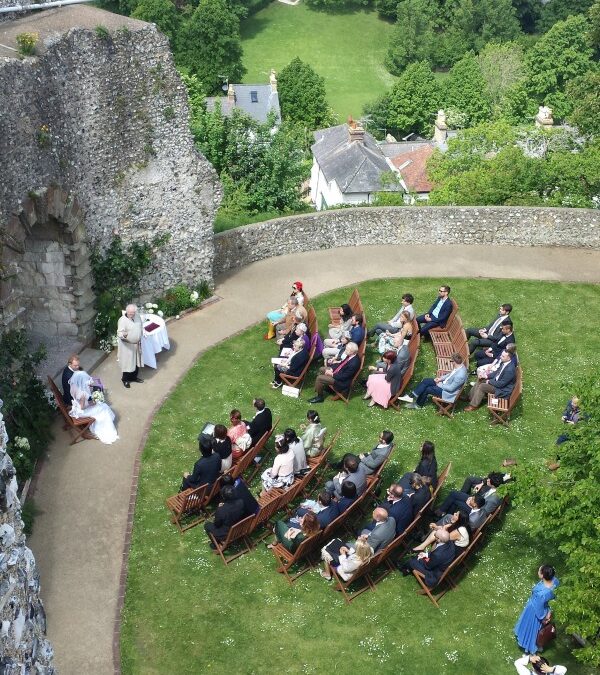
by Michael | Mar 3, 2015 | Blog
One of the joys of my job is that I create a unique ceremony. My clients have the freedom to choose precisely how they want their event to pan out. They will be in control of the amount (if any) of religion, rituals, music, readings and participation.
However, it’s worth having a closer look at “unique”. There are only so many different venues, rituals or readings available for your service – but the combination and choice can add up to “unique”.

Venue
In 2014, 33.5% of UK marriages were conducted in a religious building (mostly, churches). The registry office accounted for 10.5%. That leaft over half taking place elsewhere.
The most popular place was a hotel (nearly 20%), followed by a castle (15.5%). Almost 5% got married abroad and just fewer than 1% tied the knot in a marquee.
That leaves a fraction over 15% whose wedding took place somewhere else again!
Intriguingly, I couldn’t find any statistics for this large share of the market, but I guess we are looking at more imaginative places such as sea-shores, back gardens, hot-air balloons, underwater – and who knows where!
What it does show is that people are more aware of creative possibilities and more open to civil ceremonies.
Cost
The majority of weddings in 2014 (34%) cost between £5,000 and £10,000, although those spending between £10,000 and £20,000 were close behind (33.2%). Almost a quarter spent £5,000 or less.
The costs are unlikely to have diminished over this passage of time.
The honeymoon
The average honeymoon price was £4,700. Favourite destinations were the 3 Ms: Mexico, Mauritius and the Maldives.
Planning
Finally, how did prospective pairs plan their 2014 weddings?
Clearly, they used a combination of resources. Websites furnished information for 90.5% of couples, magazines 83.5% and fairs or shows almost three quarters.
Summary
Evidently, people are becoming conscious of having more choice. They realise that the church and register office are not the only options. Along with venue selection, they can have a real say in how they celebrate their own big day. And that means the type of ceremony (for further thoughts on this, please see my blog “Personalised Weddings” ).
This freedom of choice has got to be a good thing! Use it!







